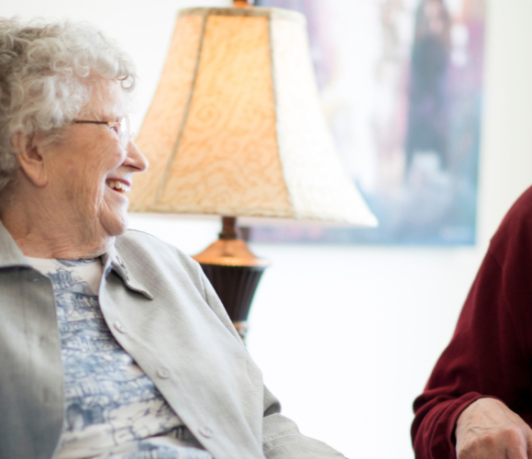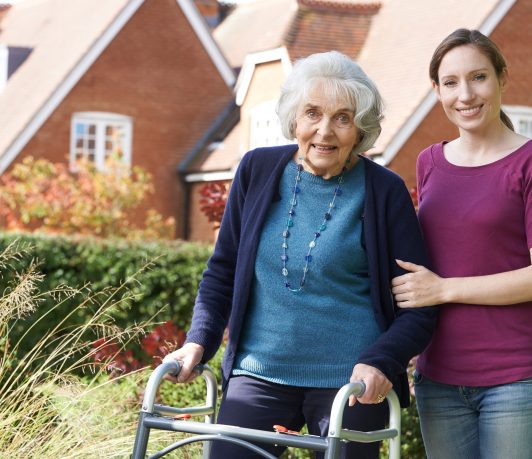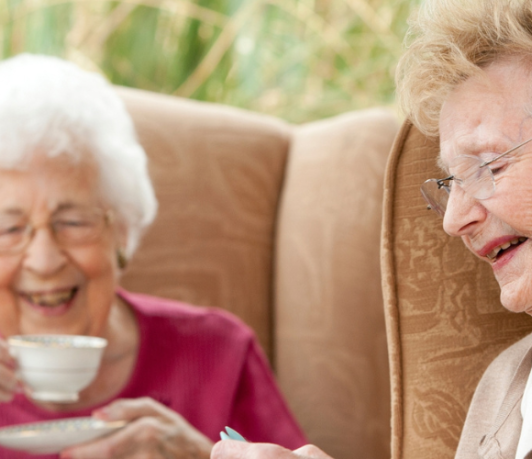How to Stay Healthy and Safe this Summer
Aged Care, Health & Wellness, Home Care |

As we bid farewell to spring and eagerly anticipate the warmer months ahead, it’s crucial to brace ourselves for the impending heatwaves that often accompany our Australian summer.
Recent reports have highlighted high temperatures experienced across the country in periods during Spring, coupled with the confirmation of an El Niño weather phenomenon for the 2023–24 summer. These ominous signs suggest that we’re in for a hot season, making it imperative for us, especially the older members of our community, to prioritise our health and safety as well as care for others around us.
Below, we delve into the potential risks posed by extreme heat and offer valuable insights on how to stay cool, hydrated, and well-protected during the scorching days that lie ahead.
Understanding the risks: Heat stroke and heat exhaustion
Before we explore several strategies for staying healthy in the heat, let’s take the time to understand two significant heat-related conditions: heat stroke and heat exhaustion.
Heat stroke: Heat stroke is a severe heat-related illness that occurs when the body’s temperature regulation system fails, leading to a dangerous rise in core body temperature. This can be a life-threatening condition, and it requires immediate medical attention. Symptoms may include confusion, rapid heart rate, nausea, and even loss of consciousness. Prevention is crucial, and it begins with understanding the risk factors and adopting measures to stay cool.
Heat exhaustion: Heat exhaustion is a milder form of heat-related illness, but it can escalate if not addressed promptly. Symptoms include heavy sweating, weakness, dizziness, and a rapid pulse. If left untreated, heat exhaustion can progress to heat stroke. Recognising the signs of heat exhaustion and taking action promptly can prevent it from becoming more severe.
The impact of stress on the body
It’s essential to recognise that extreme heat places stress on our bodies, especially for older individuals whose physiological resilience may be compromised. Stress, in this context, refers to the additional strain placed on the cardiovascular and thermoregulatory systems as the body works to cool itself. Prolonged exposure to high temperatures without adequate hydration and cooling measures can lead to serious health issues.
Responding to signs of heat-related illness
Recognising the early signs of heat-related illnesses is crucial for prompt intervention. If you or a loved one experiences symptoms of heat exhaustion, such as heavy sweating, weakness, dizziness, or a rapid pulse, it’s vital to take immediate action.
Move to a cooler environment, preferably indoors with air conditioning or a fan. Hydrate by sipping cool water slowly, and consider taking a cool shower or bath. If the symptoms persist or worsen, seeking medical attention promptly is essential.
In the case of heat stroke, often characterised by confusion, rapid heart rate, nausea, and potential loss of consciousness, it is a medical emergency. Call emergency services immediately, move the person to a cooler place, and try to cool their body using damp cloths or a cool bath while awaiting professional help.
Remember, early intervention can significantly improve outcomes in cases of heat-related illnesses.
Practical tips for staying safe during summer
Now that we understand the potential risks associated with summer heat, let’s explore a range of practical tips and strategies to help you and your loved ones stay safe so that we can all enjoy the warmer months.
Stay hydrated: Proper hydration is the cornerstone of staying healthy in the heat. Aim to drink plenty of water throughout the day, even if you don’t feel particularly thirsty. Dehydration can escalate quickly in high temperatures, leading to complications such as heat exhaustion. Consider carrying a reusable water bottle and setting reminders to drink water regularly.
Dress appropriately: Opt for loose-fitting, lightweight, and light-coloured clothing to reflect rather than absorb the sun’s rays. This not only helps in staying cool but also protects the skin from harmful UV rays. A wide-brimmed hat and sunglasses can provide additional protection from the sun, reducing the risk of heat-related illnesses and sunburn.
Create a cool environment: Ensure your living spaces are well-ventilated. If possible, use fans or air conditioning to maintain a comfortable indoor temperature. During peak heat hours, consider staying indoors to minimise exposure to the sun. If you don’t have access to air conditioning, create cross-ventilation by opening windows and doors. Additionally, if possible, consider using light-coloured curtains to reflect heat away from your living spaces.
Plan outdoor activities wisely: If you need to be outdoors, plan activities for the cooler parts of the day, such as early morning or late afternoon. Take frequent breaks in the shade and avoid strenuous activities during the hottest hours. Consider organising outdoor events that involve less physical exertion, such as picnics or leisurely strolls in shaded areas.
Monitor medications: Certain medications may increase sensitivity to heat. Consult with your GP or healthcare provider to understand if any medications you are taking could pose additional risks during hot weather. They may adjust your dosage or recommend alternative medications to mitigate the impact of heat on your body.
Stay informed: Keep an eye on weather forecasts and heat advisories. Stay informed about the daily temperature and adjust your plans accordingly. If extreme heat is predicted, consider rescheduling outdoor activities or moving them to cooler times of the day. Being proactive in responding to weather forecasts can help you plan and adapt to changing conditions.
Supportive community networks: Stay connected with friends, family, and neighbours. Look out for one another, especially those who may be more vulnerable to the effects of extreme heat. Community support can make a significant difference in times of need. For those of you who are take on an active role in your community, you may even want to consider organising local initiatives that promote heat safety, such as neighbourhood cooling stations or check-in systems for elderly or vulnerable residents.
Cool-down techniques: If you start feeling overheated, employ simple cooling techniques to bring down your body temperature. Use a damp cloth on your forehead, neck, and wrists. Take a cool shower or bath or place your feet in cool water. These measures can be effective in providing immediate relief and preventing the escalation of heat-related illnesses.
Nutritional support: Certain foods can contribute to hydration and provide essential nutrients to support your body in coping with heat stress. Include hydrating foods in your diet, such as water-rich fruits and vegetables. Consider avoiding heavy, hot meals, and opt for lighter, refreshing options. You may want to consult a nutritionist for personalised advice on a summer-friendly diet.
Exercise mindfully: While regular exercise is crucial for maintaining overall health, it’s essential to be mindful of the intensity and timing of your workouts during hot weather. Opt for low-impact exercises in the early morning or late evening when temperatures are cooler. If you engage in outdoor activities, choose shaded areas, and listen to your body—take breaks as needed and stay well-hydrated.
In summary
As we prepare to embrace the summer heat, let’s prioritise our health and safety by staying informed and adopting proactive measures. By understanding the risks associated with extreme heat, recognising the signs of heat-related illnesses, and implementing practical strategies to stay cool and hydrated, we can navigate the summer months with confidence and enjoy the season responsibly and safely.
Interested to learn more about our services?
Simply fill in the below form and one of our friendly team will give you a call within 48 hours.




